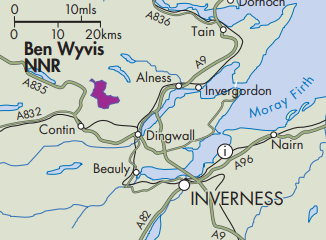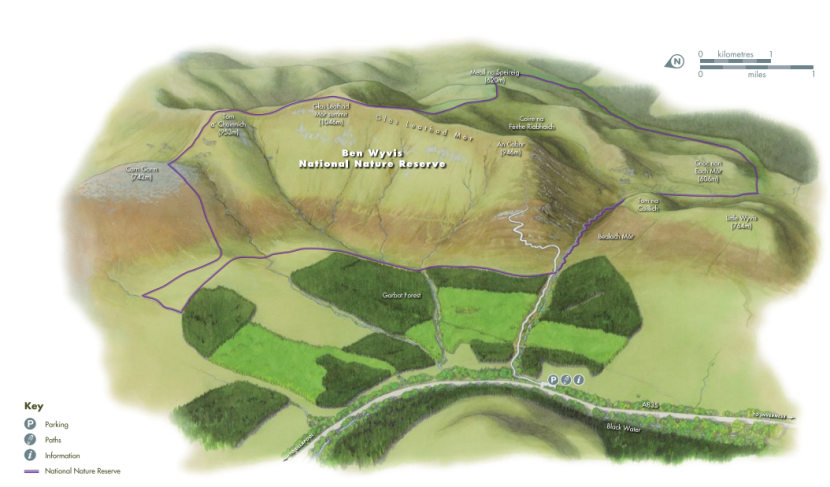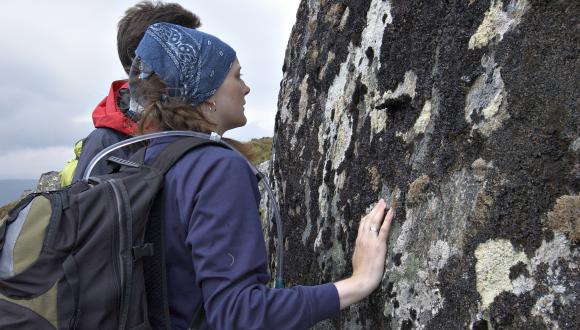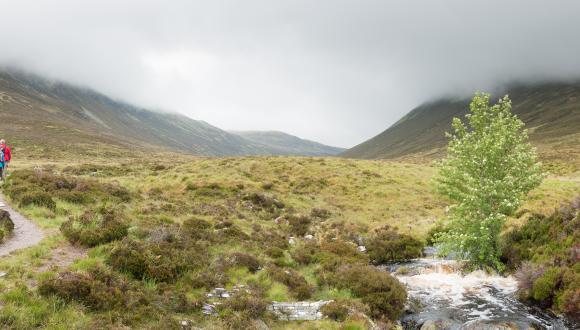Ben Wyvis NNR - visiting the reserve leaflet
Read in Gaelic / Leugh ann an Gàidhlig
Welcome to Ben Wyvis National Nature Reserve
The whaleback ridge of Ben Wyvis stands proudly alone, commanding the skyline of the inner Moray Firth. Local people affectionately call it ‘the Ben’.
The Ben is a special place. Its upper slopes are a carpet of soft, springy moss, the breeding ground of the dotterel, one of Scotland’s rarest mountain birds. Coires, crags and boulders are the remains of an Ice Age landscape. You might share the view from the summit with a raven or a golden eagle.
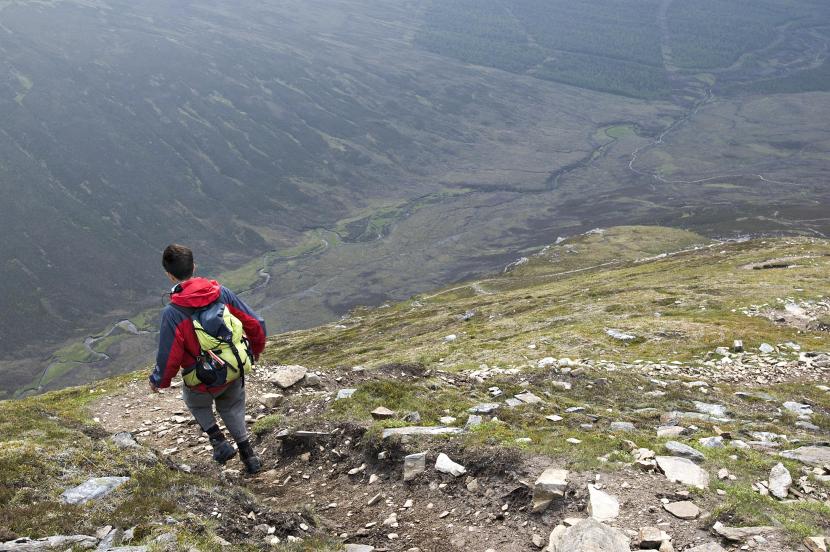
On top of the world
From the car park the path follows the Allt a’ Bhealaich Mhòir stream with aspen, birch and rowan clinging to its banks. After two kilometres it enters the Reserve’s landscape of heather and bog plants. It zig-zags steeply up a staircase of boulders through the scree to An Cabar (946m).
There, take the most direct route along the ridge to the summit, keeping to the centre of the eroded areas to prevent further damage. The two kilometre walk rewards you on a clear day with views over the whole of the Moray Firth to the north and east, the Cairngorms to the south and the remote Fannich peaks to the west.
The great goblin
Ben Wyvis is a series of summits, the highest being Glas Leathad Mòr (1046 m), the ‘great, green, broad slope’. Its Gaelic name ‘fuathas’ has many meanings - terror, awesome, high, noble, spectral, goblin – which sum up the Ben’s looming presence.
Ben Wyvis lies on the east side of the A835 at Garbat, between Garve and Loch Glascarnoch.
For more information, please contact:
- NatureScot, Achantoul, Aviemore, PH22 1QD.
- Tel: 01479 810 477
- nnr.scot

Planning your visit
Although a popular and relatively easy climb, Ben Wyvis should be treated with respect. The 6.5km / 4 mile route starts from the Forestry Commission car park at Garbat on the A835 between Garve and Ullapool, heads up to An Cabar and along the summit ridge. The average time to the summit and back is six hours.
- Check the weather forecast and rethink your plans if conditions change on the mountain.
- Equip yourself with a map, compass, hillwalking boots and warm, weatherproof clothing even in summer. There is no shelter at An Cabar or on the ridge.
- Tell someone where you are going and on your return.
- Please keep dogs on a short lead or close at heel during the breeding season for groundnesting birds from April-July. Dogs exploring the summit plateau can cause the parent dotterel and ptarmigan to abandon eggs or chicks.
- Quad bikes and scramblers are illegal. It takes years to repair damage to sensitive mountain plants.
- The lay-by at Silverbridge, 3km / 1.8 miles south, has an accessible public toilet.
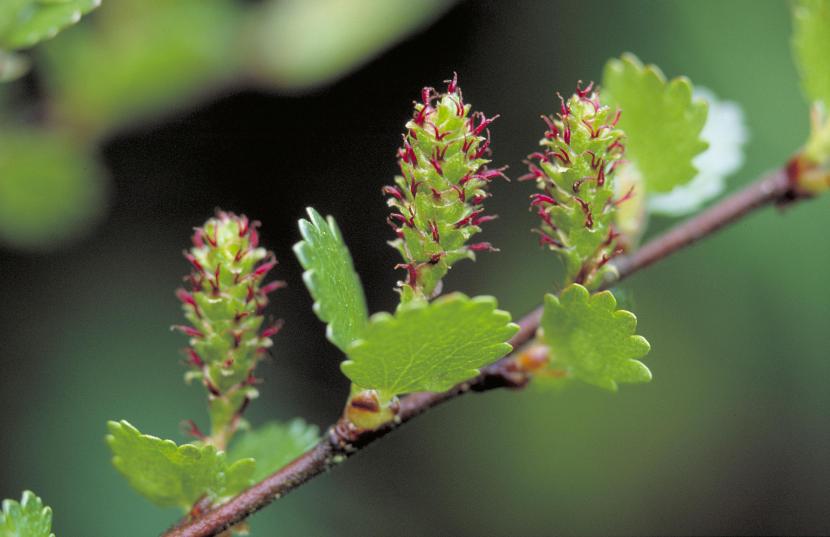
Rock on the move
Ben Wyvis is an 11,000 year old Ice Age landscape. As the ground constantly froze and thawed, the mountain’s surface layers expanded and slipped downhill forming the present patterns of low hummocks and ridges. Glaciers flowing across the Highlands picked up boulders and deposited them many miles away. Look out for these ‘erratics’ especially the dramatic boulder near An Cabar.
Snowballs in June
Clan Munro chiefs held land on Ben Wyvis, on condition of presenting the king with a snowball at midsummer. In those days snow patches in the north-facing coires rarely melted.
Deer, sheep and cattle have grazed the hill for centuries. Many fences, paths and rock shelters date from the mid 19th century when most of the mountain was a sporting estate.
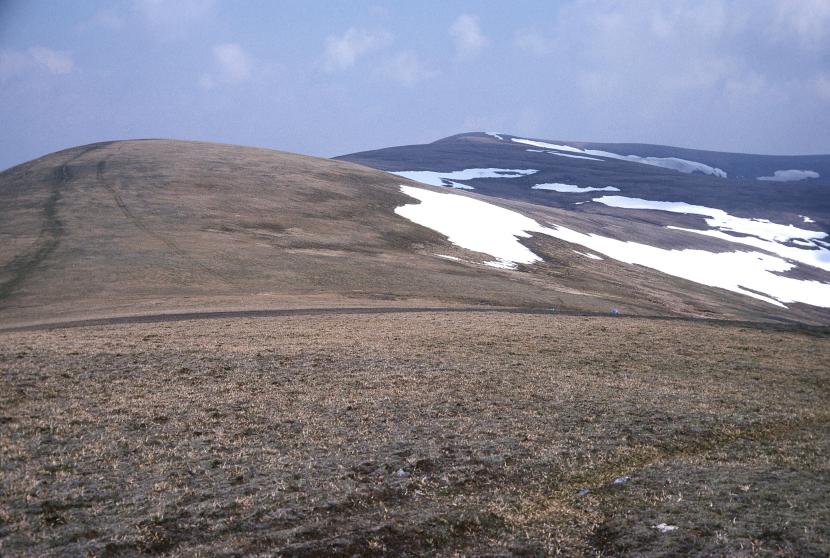
Wild Wyvis
With over 170 species the Ben is rich in plant life. Dwarf birch, alpine bearberry and mountain crowberry grow in the lichen-speckled blanket bog of the lower slopes. The high coires support Arctic-alpine flowers. Acid-loving plants like parsley fern, alpine lady-fern and least willow grow among the rocks. Look out for red deer, mountain hare, red grouse, golden plover and ptarmigan. Dotterel breed in the carpets of the summit ridges.
A rare carpet
Walking the summit ridge is like stepping on a deep-pile carpet. Stretching for almost a mile, this carpet is the UK’s largest area of woolly hair-moss. Mosses are easily damaged by trampling, bikes or even deer. The carpet loses its springiness and over time the moss dies. Wide ‘paths’ of bare, eroded ground have developed on the ridge. Keeping to the centre of these paths helps preserve this precious carpet for others to enjoy.
Reserve map
Find out more on
- Visiting the reserve
- About the reserve
- Visit more of our nature reserves
